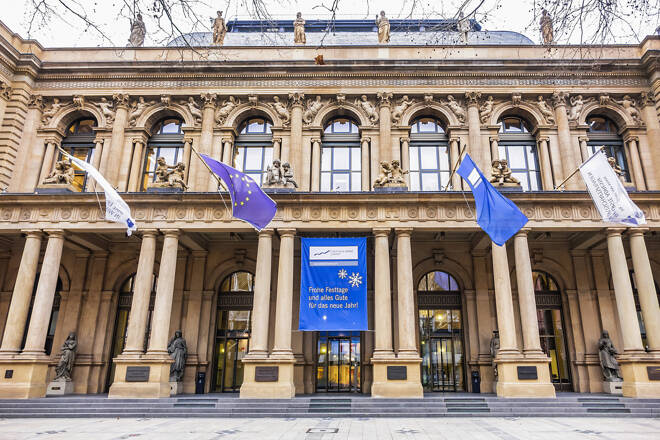Advertisement
Advertisement
Germany: Economy to Rebound in 2024 Following Stagnation, on Government, Consumer Spending
By:
Germany's economy will return to modest growth in the second half of this year, but elevated inflation and volatile net exports will ensure the recovery remains weak at least until 2024.
Germany’s economy will expand by around 1.7% in 2024, well above Germany’s medium-run potential of 0.9% and up from the likely low 0.2% expansion in 2023.
The main growth drivers are higher government spending, notably on defence and the energy transition, and improved consumer spending as inflation eases. More robust growth and a resilient public-debt profile will contain near-term pressures from higher interest rates on Germany’s public-sector credit metrics.
Economic contraction in Q1 2023 was driven by a steep fall in government consumption, the largest QoQ decline in several decades reflecting, among other factors, the drawdown from high spending during the pandemic.
Government spending fell by 5.4% in Q1 2023 compared with the same quarter last year, reducing quarterly growth by 1.1pps (Figure 1). Spending stood at just 2% above levels from Q1 2020 (at the onset of the Covid-19 pandemic), well below that for other AAA rated sovereigns such as Austria (+13.5%), the Netherlands (+9.5%) and other large EU states such as France (+8.4%).
Figure 1. Quarterly contribution to GDP growth, pps
Government finances will remain constrained, but this sharp decline in government consumption looks temporary. Spending to support energy transition is rising, as is military expenditure in response to Russia’s war in Ukraine, in addition to higher social and health-care spending partly related to Germany’s ageing population.
The coalition government has earmarked around EUR 200bn to shield households and companies from higher energy prices by increasing domestic energy supply as well as introducing gas and electricity price brakes. While actual spending on these price brakes may be lower than originally anticipated, the funds will still be used to help fund the energy transition over coming years.
In addition, most of the EUR 100bn, equivalent to 2.6% of GDP in 2022, in extra-budgetary funds for modernising the German army will be spent over the next three to four years, sustaining government consumption.
Conversely, continued high inflation will constrain the recovery in household consumption this year, after real earnings fell by 4% last year. Consumer confidence should recover next year due to a recovery in real earnings as price brakes on energy prices shield households until at least April 2024.
Attempts to De-risk Reliance on China Cloud the Trade Outlook
As Germany seeks to reduce its reliance on trade with China, the volatility of growth contributions from net exports is likely to persist (Figure 1). Trade with China fell by more than 10% in Q1 2023, but the country was still Germany’s most important trading partner for the seventh consecutive year last year. Imports increased rapidly over the past two years pushing the trade in goods balance to an all-time high deficit for Germany of EUR 18bn in Q1 2023.
This deficit is unlikely to reverse quickly. Germany will continue to rely on China for vital intermediate goods, including for its energy transition, such as rare earth metals, which come almost exclusively from China.
Return to Fiscal Discipline Limits Spending; Moderately Higher Interest Expenses Over Coming Years
Expansionary fiscal policy still has its limits in Germany. A return to the debt brake this year and rising interest payments will restrict flexibility around government expenditure. The clear differences in priorities between the three coalition partners is also slowing some policy reform progress. Negotiations around next year’s draft budget are proving tense as a deficit of around EUR 20bn remains amid disagreements over energy policy.
Figure 2. Net interest burden as a percentage of general government revenues, %
The 2023 federal budget indicated a 10-fold rise in interest expenses, picking up from EUR 3.9bn (0.7% of central government expenditure) in 2021 to EUR 39bn (8.2% of expenditure) in 2023. However, this is mainly driven by the government’s cash-based accounting approach, which overstates interest expenditure when rates rise.
The IMF’s accrual-based approach to measuring governments’ interest burdens as a share of government revenue is a more accurate reflection of when interest expenditure is incurred. While the general government interest burden will rise, it is likely to remain at around 2% of revenue over the next five years – higher than that for other AAA-rated countries, but low compared with the past decade and well below that of other large European sovereigns (Figure 2).
Germany also has a favourable residual maturity of its federal debt securities of more than 7.5 years and a low share of inflation-linked securities, which make up just 3.6% of outstanding debt compared with France (11%) and the UK (25%) where there were spikes in interest costs last year due to high inflation.
For a look at all of today’s economic events, check out our economic calendar.
Eiko Sievert is a Director in Sovereign and Public Sector ratings at Scope Ratings GmbH.
About the Author
Eiko Sievertcontributor
Eiko Sievert is a Senior Director in Scope’s Sovereign & Public Sector ratings group, responsible for ratings and research on a number of sovereign and supranational borrowers.
Did you find this article useful?
Latest news and analysis
Advertisement
